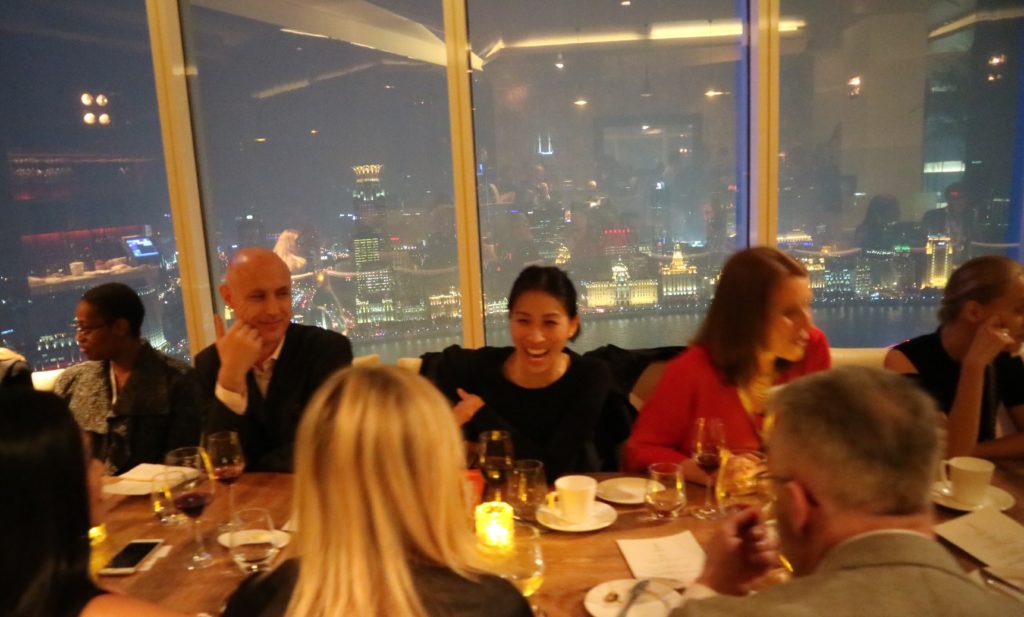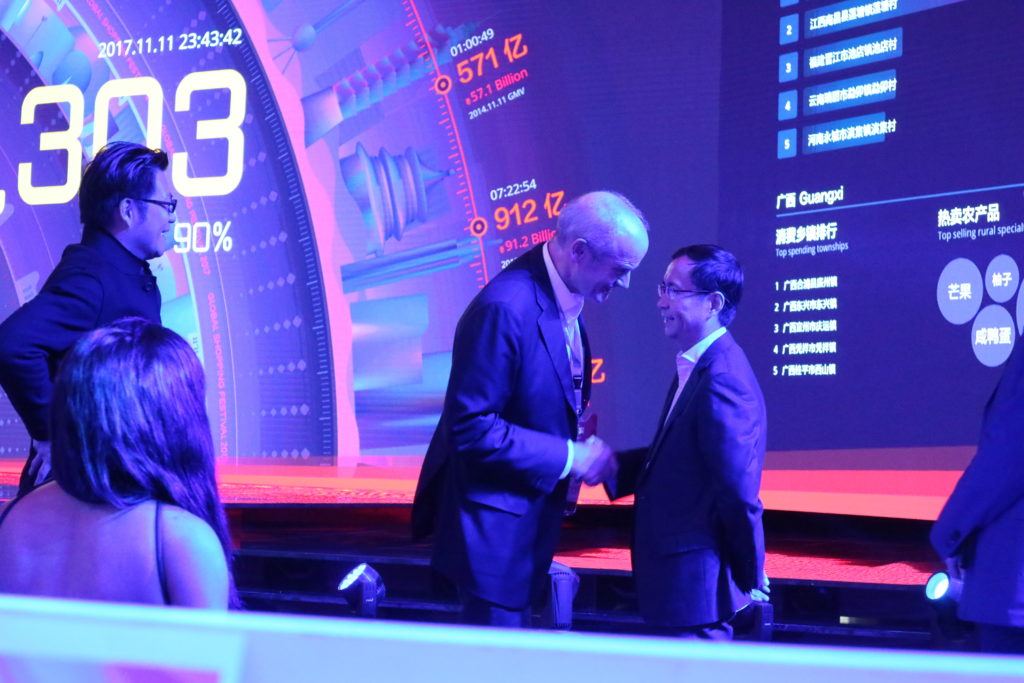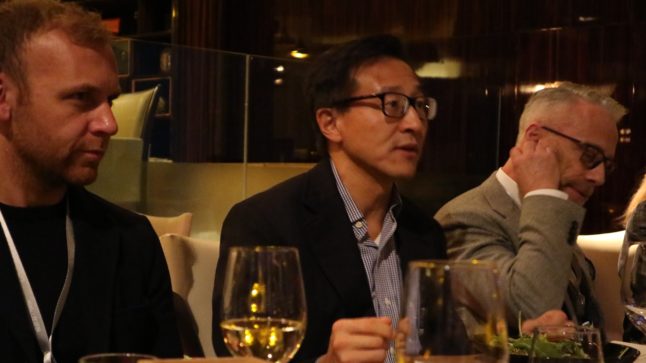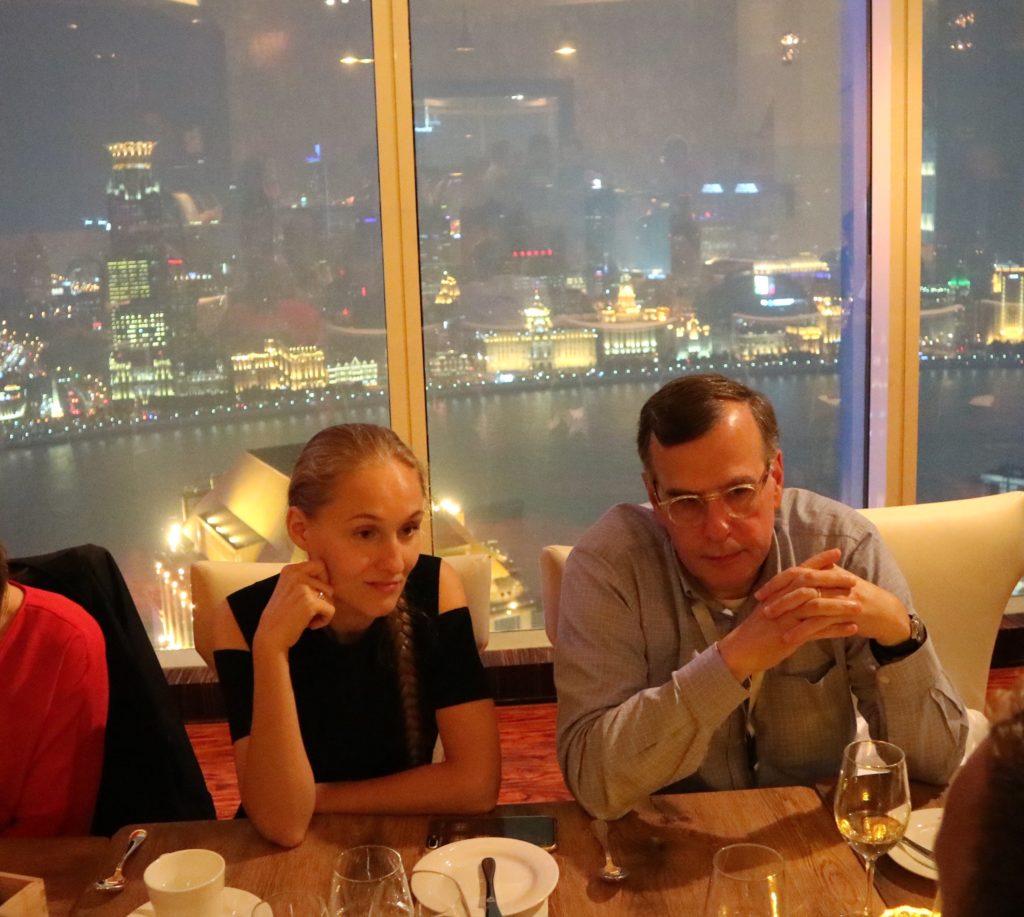I spent Singles’ Day 2017 visiting Alibaba and meeting with management (see Part 1 and Part 2 here). And one big highlight of the visit was a group influencer dinner with Alibaba Vice-Chairman and co-founder Joseph Tsai. He was always the guy I listened to about Alibaba. Jack Ma is famous but doesn’t really speak the language of business people. And I’ve never been convinced he was the big thinker at the company. I always suspected it was Joe Tsai.
Some Background: The Awesome Story of Joseph Tsai
Joe Tsai was with Alibaba from almost the very start. Taiwanese born and American educated (Yale undergrad in economics and East Asia studies, JD from Yale Law School), he famously left his investment job in Hong Kong to join Jack Ma in 1999. At the time, he was working at Swedish investment group Investor AB.
Keep in mind, when Joe first met Jack in May of 1999, Alibaba was basically a free online bulletin board. It was a simple website where China suppliers and foreign buyers could post and connect. They would then do business offline and through banks. The website had only been up for a few months and there just wasn’t much to Alibaba as a company at that time. Plus Jack’s history at that point mostly consisted of his founding of a small translation services company (Hope Translation, 1994) and an online directory (China Pages, 1995).
So it was a really daring move to leave his professional investing career in Hong Kong and join a small, scrappy group in Hangzhou. Why did he do it?
My guess is he either believed in the potential of ecommerce in China and / or he believed in the potential of Jack Ma. But for both, it was a bet on “what could be”, not on what was.
But in 1999, Joe joined the small team – and he and Jack went on to write one of the greatest stories in business history. Over the next 17 years, this story included:
- The first $5M investment by Goldman Sachs. This was the deal that turned a small group with a primitive website into a credible company moving against a big idea.
- The early fight with Global Sources for the cross-border B2B market. Global Sources, run by American Merle Hinrichs, was a successful print catalog that connected Chinese suppliers with foreign buyers. Basically, it was an offline version of Alibaba.com and it was Alibaba’s first major competitor.
- The frantic early fundraising (they had no revenue model early on). And how they survived the crash of the internet bubble in 2000-2001. They also got screwed out of most of their equity by their first 1-2 investors.
- The secret launch of Taobao in 2003. Note: if Alibaba.com was the online version of B2B-focused Global Sources, then Taobao was the online version of a C2C trading bazaar. Think an online version of the city of Yiwu.
- The now famous fight with eBay / Eachnet. Although it wasn’t much of a fight. eBay basically collapsed in a year.
- The 2005 deal with Yahoo. Plus the later dealings with Yahoo CEO Jerry Yang (amicable) and subsequent CEO Carol Bartz (not so amicable but highly entertaining reading).
- The 2007 IPO of Alibaba.com (the B2B site).
- The long association with Masayoshi Son of Softbank. Mr. Son is on my short list of people I am trying to meet (right between Jorge Lemann of 3G and Jessica Alba).
- The jump into B2C e-commerce with Tmall in 2008.
- The launch of Alipay, Alibaba Pictures, Alibaba Cloud and literally hundreds of other ventures and investments.
- The 2014 IPO, at the time the largest IPO in history.
It’s an amazing story. So it was pretty fantastic to find myself sitting at the table with Joe (along with 14 other “global influencers”). We met at the top of the JinMao tower in Shanghai’s Liujiazui district. Shown on the right below. Note: the tower on the left is the Shanghai World Financial Center by Mori Building Company (builder of Roppongi Hillis in Tokyo). I’ll talk about my meetings with the Mori people another time.

Below are my 5 take-aways from the dinner. Note: this is my interpretation and these are not the opinions or statements by Mr. Tsai or Alibaba.
Take-Away 1: Solving Problems is Critical Because It Creates a Larger Pie.
Joe remarked about how much of business can be fighting other players in a static or mature market. This sort of business is mostly win-lose, as you must take and defend from competitors. It’s difficult and can be very expensive. This is pretty much where I live as an analyst.
But if you focus on solving problems, you can create new cost savings and open up new markets. You can grow the entire pie and increase the amount of money on the table. In this type of business, you can grow and thrive without necessarily taking from competitors. Solving business and societal problems is a better and more profitable approach.
Ashley Dudarenok of ChoZan and Frank Lavin of Export Now
Take-Away 2: Data with “High Consumer Intent” is Particularly Valuable.
There was a lot of discussion about data as a competitive advantage. In my experience, data is rarely a competitive advantage. It is most often a necessary asset, like a good brand or an efficient factory. And it is the critical input to orchestrating platforms and innovating against the user experience. But it is rarely a competitive advantage or network effect.
Joe made an interesting comment about how data with “high consumer intent’ is particularly valuable. I thought that was a good phrase to remember. “High consumer intent” is what tells you what a consumer might really want to buy. Or be ready to buy. Or be open to buying. It is the customer closest to the center of the target. These are the situations where a customer is already 50% of the way there in terms of buying.
Of course, identifying “high consumer intent” in data is not so simple. It could be search history but Alibaba is way beyond that. It could be buying a similar product. It could be leaving a review on a product that is highly correlated. It could be watching certain videos on Youku. It could be reading a certain book or article. That’s why companies like Alibaba are so effective. They have a 360 degree of consumer behavior that most all merchants lack. So they can determine “intent”. I’ve been thinking a lot about what type of data shows “high consumer intent” for what categories.
Take-Away 3: Amazon and Google Are Great at AI.
My research is on competition (mostly the impact of data and digital tools on competitive advantage). And the question I really wanted to ask Joe was: What company are you most afraid of? Who are you most concerned about?
As a rule, nobody knows a company as well as its competitors.
But I thought that was a bit forward. So I rephrased it as: Who do you think is really great at artificial intelligence? What companies does he follow, admire or look to when it comes to artificial intelligence?
His reply was:
- Amazon is very good at AI.
- Google is also very good. He specifically mentioned their work in chip design and TensorFlow, their open source software for machine learning.
Take-Away 4: “New Retail” Increases Use Cases and Speed of Delivery. But Alibaba Wasn ‘t Going to Operate Lots of Stores.
Regarding “new retail”, Joe talked about how it would let Alibaba address several use cases in one customer visit.
First, I really like how Alibaba keeps talking about retail with software language, like “use cases”. His point was a customer can go into a Hema / Freshippo supermarket and pick-up groceries already ordered on a phone, can order prepared food, can get laundry done and can have things shipped to their home. The integration of online and physical retail increases the number of use cases you can address at one time. That should lead to growth and continued innovation on the customer experience. I also thought this comment was similar to what CMO Chris Tung said the next day about being most excited about the “high involvement” customer situations in new retail.
Second, he mentioned the impact of new retail on the speed of delivery. Speed of delivery depends on how close the inventory is to the consumer. And the new Hema supermarkets are a combination of a retail space and a fulfilment center that serves a 3km radius around the store. So they can delivery very quickly within this radius. Fast delivery is good overall but it is particularly important in categories like groceries (people usually don’t buy their food a week in advance).
Finally, he mentioned that while Alibaba owned 20 Hema supermarkets at that time they were not going to own lots of them. They were going to franchise or license the system and technology to others. This would be pretty similar to their approach in logistics with Cainiao. They seem to like to provide data and digital tools but are not usually asset owners or operators themselves.
Somewhere in 2019, Alibaba seems to have changed their mind about this approach to new retail. They built +200 Hema stores and bought Sun Art Retail (giving them about +400). They clearly began to see physical retail as part of their core infrastructure. Their core infrastructure is now physical retail plus logistics plus cloud. 
Matthew Crabbe of Mintel and Connie Chan of Andreessen Horowitz
Take-Away 5: Alibaba’s Biggest Strategic Gap is Capturing Consumers Outside of China.
Joe made a comment that he sees serving consumers outside of China as their biggest gap going forward.
This has always been my question. Is Alibaba going to try and capture consumers outside of China? From the talk with Michael Evans (here), it was clear they are going after consumers across Asia. And globalization remains one of the company’s 3 big strategic priorities. And they have long been going after merchants and brands globally, as they serve Chinese consumers. But are they going to attempt to buy or build local platforms based on local customers in places like Russia and Brazil?
Michael said they are going global “selectively”. I took that to mean they would buy something if it came up and made sense. But they are not looking to build new platforms around the world. And there is no natural strategy for them to do this. Most of their strengths do not help them capture consumers in Russia or Poland.
So they are operating opportunistically. And it’s worth keeping in mind, they regularly do over 50 investments and acquisitions per year (about one a week). So “selective” is all relative.
I’m thinking they are actively hunting for e-commerce platforms to buy. But aren’t planning on building them outside of Asia.
***
I’ve met with their management and done tours quite a few times over the years. It’s a pretty fascinating company. And management is quite clear in their strategic thinking. So I try to listen to the key people as much as I can. Here is a discussion with President Michael Evans (here). Here is a discussion with CMO Chris Tung (here).
Thanks for reading, Jeff
Below is a picture taken at the close of Singles’ Day 2017. The senior management came to the media center to celebrate. Shown below are President Michael Evans, CMO Chris Tung and CEO Daniel Zhang. 
——
Related articles:
- What Worries Me About Alibaba Long-Term (Asia Tech Strategy – Podcast 96)
- An Update on Alibaba’s Growth Engines (Asia Tech Strategy – Daily Lesson / Update)
From the Concept Library, concepts for this article are:
- Marketplaces for Products
- Smile: Ecosystem Orchestration
From the Company Library, companies for this article are:
- Alibaba
Photo by Mikhail Preobrazhenskiy on Unsplash
——–
I write, speak and consult about how to win (and not lose) in digital strategy and transformation.
I am the founder of TechMoat Consulting, a boutique consulting firm that helps retailers, brands, and technology companies exploit digital change to grow faster, innovate better and build digital moats. Get in touch here.
My book series Moats and Marathons is one-of-a-kind framework for building and measuring competitive advantages in digital businesses.
Note: This content (articles, podcasts, website info) is not investment advice. The information and opinions from me and any guests may be incorrect. The numbers and information may be wrong. The views expressed may no longer be relevant or accurate. Investing is risky. Do your own research.

